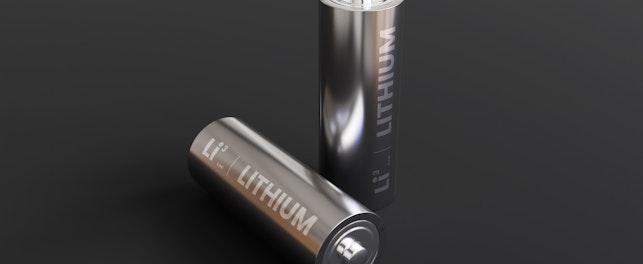77% of Europeans would rather repair than replace a damaged electrical and electronic (EE) product.1 We look at France’s new reparability index for EE products.
E-Waste
In 2019, 53.6 million metric tons (Mt) of electrical waste (e-waste) was produced globally but only 17.4% was officially documented as properly collected and recycled. That is roughly 7.3 kg of e-waste per person annually, and the trend is only expected to get worse. By 2030, it is predicted the global e-waste figure will be 74.7 Mt.2
While this is a global problem, fueled by higher consumption rates for electrical and electronic equipment (EEE), short life cycles and a lack of repair options, not all regions are contributing equally. Figures from 2019 show Asia generated 24.9 Mt of e-waste, the Americas 13.1 Mt, Europe 12 Mt, Africa 2.9 Mt and Oceania 0.7 Mt,
When we look at recycling, we see a different picture. Europe is top with 42.5%, then Asia 11.7%, the Americas 9.4%, Oceania 8.8%, with Africa collecting and recycling only 0.9% of e-waste. The fate of 82.6% of all e-waste, roughly 44.3 Mt, is uncertain. It is clear recycling is not keeping pace with the global growth in e-waste.3
Obsolescence and Environmental Impact
Part of the problem is that modern EE products are difficult or impossible to repair. In effect, this is built-in obsolescence. HOP, the Stop Obsolescence organization, has been lobbying to change this paradigm. In their white paper, ‘Durable and repairable products: 20 steps to a sustainable Europe’, they note that extending the life of EE products will have considerable positive benefits for consumers and the environment.4
The European Environmental Bureau says that, “extending the lifetime of all washing machines, notebooks, vacuum cleaners and smartphones in the EU by just one year [will] save around 4 million tonnes of carbon dioxide (CO2) [emissions] annually by 2030, the equivalent of taking over 2 million cars off the roads for a year.”5 Most of these emissions come from resource extraction and manufacturing. Therefore, reducing obsolescence will lessen the need for new products and thereby reduce the impact on the environment.
The key is to design products that will last longer. The European Commission has determined that 80% of a product’s total environmental impact is decided at the design phase.6
Regulations and Solutions
Around the world, countries are beginning to address the problem. By 2019, 78 countries had national policies or regulations covering e-waste, but adoption has not been universal. Advances in some regions have also been slow due to a lack of investment and political motivation.
One region that is leading the way in promoting more sustainable EE products is Europe. The European Union (EU) has already introduced several initiatives to promote greener approaches to EE. These include the Waste of Electrical and Electronic Equipment (WEEE) Directive, Energy-related Products (ErP) Directive and the Ecodesign Directive.
Reparability Index
On February 10, 2020, France passed the Anti-Waste for a Circular Economy Act (AGEC), which introduced numerous reparability measures. It covers five categories of EE product – computers, TVs, smartphones, lawnmowers (wired, battery-operated and robotic) and washing machines. These product categories were chosen as most houses will have at least two of them.
In relation to reparability, AGEC states:
- Manufacturers must provide vendors with information on the availability of spare parts for repair
- EEE professionals must offer spare parts originating from the circular economy
- Manufacturers must provide vendors or repairers with spare parts for repair within 15 days
- Techniques, including software, that are intended to make it impossible to repair or recondition a device are prohibited
- Products repaired under legal guarantee will have that guarantee extended by six months
Since January 1, 2021, French vendors, including online retailers, have been required to display a reparability score. This is a grade out of ten, in which ten is deemed the best and therefore the most reparable. The score is displayed on a wrench logo with color gradations showing the reparability – green is very good and red is very bad.
The aim is to promote greater reparability of EE products. It gives consumers the information to make informed choices about the reparability of a product before they buy it. A 2018 study found that consumers were twice as likely to choose a product that was labelled ‘more reparable’.7
It is hoped the index will also promote competition between manufacturers to design more reparable products with the aim of achieving better, and therefore more marketable, grades. This will extend the product’s life cycle, thereby reducing their impact on the environment and on consumer’s wallet.
What’s Next?
The plan is to extend the six-month guarantee following a repair to five years. In 2024, the reparability index will also be supplemented by a sustainability index that assesses durability.
There are also plans to introduce a reparability index across the rest of the EU. This would have broad acceptance across the continent, where 79% of citizens feel manufacturers should be required by law to make it easier to repair digital devices and/or replace individual parts. There is already a movement among EU Commissioners to grant consumers a ‘right to repair’ and in the United Kingdom, this will come into effect in the summer of 2021.8
SGS solution
SGS offers a comprehensive range of solutions to help manufacturers comply with the provisions in the AGEC. These include technical product evaluations, technical support in product reparability, and assistance in compiling the reparability manual. In addition, our experts provide training to ensure manufacturers fully understand the requirements and implications of the law.
Learn more about SGS’s Circular Economy services (in French).
For more information, please contact:
Johanna Gdalia
International Sales Manager, Connectivity
t: +33442977213
References
1 France leads the way with a “Repair index” for electronic products
2 The Global E-waste Monitor 2020
3 The Global E-waste Monitor 2020
4 Durable and repairable products: 20 steps to a sustainable Europe
5 Coolproducts don’t cost the Earth – Briefing
6 Circular Economy Action Plan: For a cleaner and more competitive Europe
7 French repairability index: what to expect in January?
8 France leads the way with a “Repair index” for electronic products & UK consumers will soon have a 'right to repair' on goods they buy



